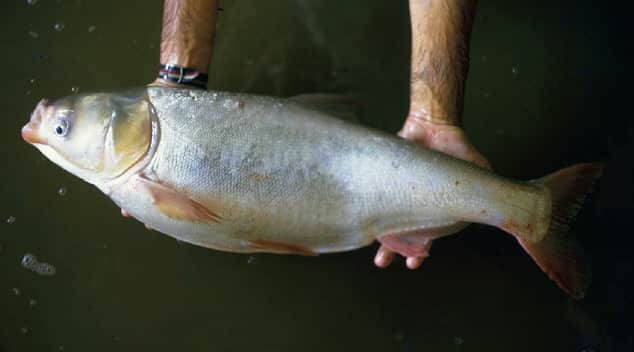Researchers Plan on Fighting Asian Carp with Underwater Speakers
OutdoorHub Reporters 05.01.14

Researchers at the University of Minnesota have a bold plan to use sound to contain the spread of Asian carp in the Mississippi River. According to WCCO 4, the Minnesota Aquatic Invasive Species Research Center intends to place underwater speakers in key sections of the Mississippi River, but they have to act fast.
“Just a few months ago, it was announced, somewhat surprisingly, that their eggs were just found south of the Minnesota border,” said Peter Sorenson, a University of Minnesota professor and director of the center. “It became evident [the] game plan had to shift.”
Sorenson’s plan is to install the acoustic barriers at Lock and Dam Number 8 near Genoa, Wisconsin. The center is now scrambling for funds to build the custom speakers, estimated to cost $60,000, before the carp arrive. In March, scientists from the US Geological Survey (USGS) announced that Asian carp have penetrated as far north in Wisconsin as Lynxville, which is about 150 miles from Genoa. Since acoustic barriers only deter carp rather than kill them, researchers will have to work fast to get the speakers in place before the invasive fish pass the barrier.
“If you don’t do something, it’s like sitting on the train tracks and watching the train come,” Sorenson said in a press release.
Asian carp have spread quickly since the species first arrived in the Mississippi River in the late 1960s. The fish can now be found in 31 states and are considered to be highly detrimental to native fish and plant life. Carp have very good hearing, up to 100 times better than some other fish species. This is especially true of bigheaded carp, who are easily disturbed by changes in water flows. The underwater speakers work by emitting a low-frequency sound in conjunction with high velocity water jets that repel Asian carp. Sorenson’s team is not the only group of researchers studying acoustic tools to use against the fish, the USGS’s Northern Rocky Mountain Science Center is also developing its own sound barriers.
Sorenson worried that the center will not be able to get the funding for the project before it is too late.
“If we follow the normal course of events here with our funding protocols, which are all great and in place, we would not be able to put them in until the end of the summer,” he said.
Researchers admitted that sound barriers are not guaranteed to stop Asian carp in their tracks, but said the technology compliments other deterrence methods well. More traditional barriers include screened flow gates, electric barriers, and fish-killing treatment plants. The center is currently accepting donations.

